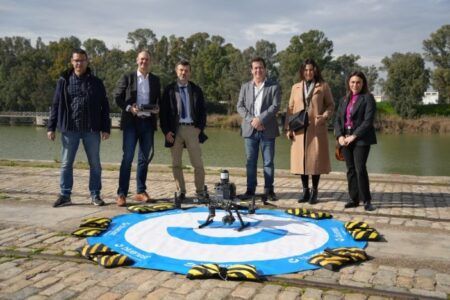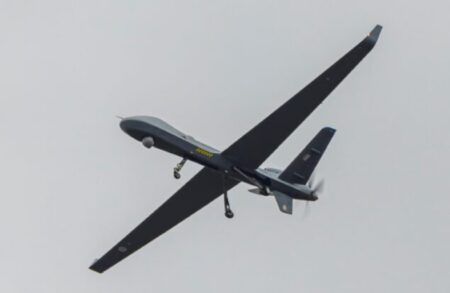The ‘out of sight’ tests, led by NASA in coordination with the FAA and several partners, were the latest waypoint in solving the challenge of drones flying beyond the sight of their human operators without endangering other aircraft.
They were part of NASA’s Unmanned Aircraft Systems Traffic Management (UTM) research platform, led by Dr Parimal Kopardekar, manager of NASA’s Safe Autonomous Systems Operations project and senior engineer for air transportation systems at Ames.
During the test, two of the drones flew beyond their commanders’ view. As many as two drones were operated in the same test airspace, separated by altitude and within view by their operators. The pilots used the NASA-developed UTM research platform to gain information about all the drones’ locations and proximity to other air traffic and hazards. UTM also informed other airspace users of potential hazards and conflicting operations that could affect their plans.
Before multiple drones can fly in the same area, beyond the pilots’ view, procedures need to be in place to safely manage the traffic. Operators must be aware of other aircraft around them, no-fly zones (also known as geo-fenced areas), and man-made and natural hazards such as severe weather in the area.
During the October 19 tests, NASA demonstrated UTM’s Technical Capability Level 2 (TCL2) by connecting real drone-tracking systems to the research platform, providing alerts for approaching drones and piloted aircraft (live or simulated), as well as providing information about weather and other hazards. “We are very happy with the test,” said Dr Kopardekar, at the close of the day. “We have completed all our test goals, in terms of the number of scenarios and data collection toward operations beyond visual line of sight. The test was possible due to very good collaboration among the partners and NASA.”
UTM partners used various unmanned aircraft connected to the research platform to test UAS operations, allowing NASA and the FAA to refine and develop the research. Additional observers kept a sharp eye on every vehicle to ensure safe operations even when the drones were out of sight of the operator-in-command.
When three of the drones flew close together, they were within view of their operators. Current FAA regulations require that drone operators be able to see any other aircraft in order to avoid them, which limits many potential applications for drone technology. The UTM demonstration will help regulators and researchers assess the capabilities and procedures that could support operations beyond operators’ sight. The operators also used common data-exchange protocols – developed jointly by NASA, the FAA and industry – to flag their intended use of the airspace to be aware of any constraints to their real-time use of it.
With the most recent tests complete, NASA now will offer the capabilities to all FAA test sites for further validation and assessment. UTM’s Technical Capability Level Three testing is planned for January 2018 and will involve evaluating tracking procedures for managing cooperative and uncooperative drones to ensure collective safety of manned and unmanned operations over moderately populated areas. Technical Capability Level Four, planned for 2019, will involve higher density urban areas for autonomous vehicles used for newsgathering and package delivery, and will offer large-scale contingency mitigation.
October 28, 2016




